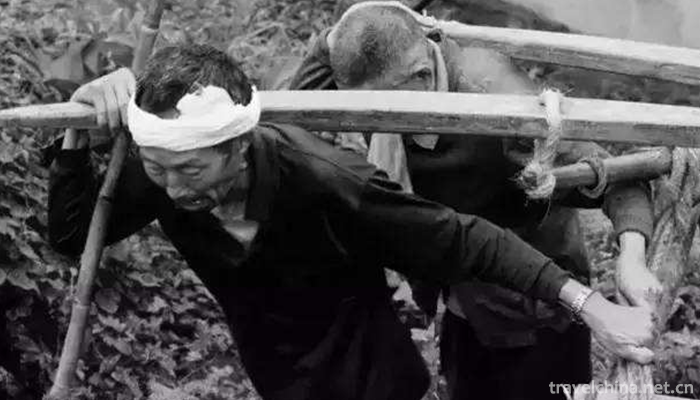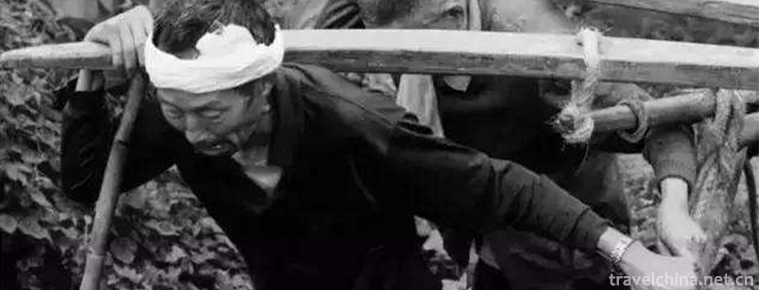Carrying a number
Carrying a number
Handling trumpets is one of the trumpets of traditional folk songs. It is popular in many fields, such as manual workers, such as loading and unloading, lifting, pushing and pulling goods.
On June 7, 2008, the carrying number was approved by the State Council to be included in the second batch of national intangible cultural heritage list.
Basic categories
According to its labor characteristics, the trumpets can be basically divided into three categories:the trumpet trumpet trumpet trumpet trumpet trumpet trumpet trumpet trumpet trumpet trumpet trumpet trumpet trumpet trumpet trump
(1) Loading and unloading numbers, which are well known in Dalian, Tianjin, Qingdao, Shanghai, Guangzhou and other places, such as crane number, shoulder number, baggage number, etc.
Second, the number of carts, such as "whistle on the flat road of the cart" in Chengdu, Sichuan, the number of pulling cart in Anhui Province, and the number of the cart in Tianjin, etc.
(3) Pick up the number, including the basket number, shoulder number, unloading number, loading number, carrying rod number and so on. Comparatively distinctive are Shanghai's "Four Combinations" and Sichuan's "Hardware Whistle Carrier" in Zigong.
Pragmatic value
Because of the high intensity of handling labor and close cooperation, the chant has strong practicability, and most of the lyrics are labor calls, with few meaningful words. Most of them are lead and form, while a few are singing alone or in pairs.
Artistic characteristics
Its musical characteristics are as follows:
Since it is always singing in the process of walking back and forth, the rhythm, rhythm and speed of the chant must be in harmony with the pace of labor.
(2) High-pitched, loud, strong breath, with the characteristics of shouting and calling. The phrases are short, collar, and compact.
(3) The composition of music is simpler, the change of structure is less, and the form of music is simple. The rhythm is regular. The rhythm is mainly 2/4. Some of them alternate 2/4 with 3/4 and 4/4.


-
1.Go BelieveGoubuli baozi
Goubuli steamed bun is a snack made of flour, pork and other materials. It was founded in 1858 (Xianfeng period of the Qing Dynasty).
Time 2018-11-14 -
2.Dalian Laohutan Ocean Park
Dalian Laohutan Ocean Park is located in the middle of the southern coast of Dalian, a national scenic spot. It covers an area of 1.18 million square meters
Time 2018-12-02 -
3.Mars Manor Scenic Spot
Ma's Manor, located in Xijiang Village, 20 kilometers west of Anyang City, Henan Province, is the mansion of Ma Piyao, governor of Guangdong Province in the Qing Dynasty.
Time 2019-02-06 -
4.Mao Zedongs former Residence
Comrade Mao Zedong's former residence is located in Shaoshan Village, Shaoshan Township, Shaoshan City, Hunan Province. It is located in the South and north of Shaoshan Village
Time 2019-02-07 -
5.Qingshuihe Ming Great Wall Site
The site of the Great Wall of the Ming Dynasty begins at Jiayuguan in Jiayuguan City in the west, passing through Jiuquan, Gaotai, Linze, Zhangye, Shandan, Yongchang, Minqin
Time 2019-02-07 -
6.Yangtze River Source of Tuotuo River
Tuotuo River: Located in Tanggula Mountain Town, Southern Region of Golmud City, Qinghai Province, it is the West source of the Yangtze River, south of the Hoh Xili Mountains.
Time 2019-02-22 -
7.Luoyang Peony Festival
The Chinese Luoyang Peony Culture Festival, formerly known as the Luoyang Peony Flower Festival, has been selected into the national intangible cultural heritage list since 1983. In November 2010, it
Time 2019-05-15 -
8.Taoist Music of Xuanmiaoguan in Suzhou
The Taoist music of Suzhou, represented by the Taoist music of Xuanmiaoguan, belongs to the Zhengyi Taoist music, and is an integral art with the performing process of Zhai Yin Fa. It sings different
Time 2019-06-17 -
9.Construction Techniques of Tujia Diaojiao Building
Tujia hanging-feet building construction skills, Hubei Xianfeng County, Hunan Yongshun County, Chongqing Shizhu Tujia Autonomous County, local traditional skills, one of the national intangible cultur
Time 2019-06-23 -
10.Yele Nature Reserve
Yele Nature Reserve is located in Yele Township, north of Mianning County, Sichuan Province, bordering on the south of Shimian County, Ya'an City. It is a provincial nature reserve. It is 70 kilometers away from Mianning County.
Time 2020-10-16 -
11.Hunter peak
Hunter peak is located in the Shuangqiao gully of Siguniang mountain, with an altitude of 5360 meters and adjacent to Jianzi mountain. The two peaks stand shoulder to shoulder, with a huge stone pillar in the middle
Time 2020-11-05 -
12.Convenient facilities and medical services of Chengdu Giant Panda Base
Chengdu Research Base of giant panda breeding has a tourist service center in the hall on the first floor of the museum, which can provide free convenience services such as microwave heating, drinking water hot water, baby carriage, wheelchair, walking stick, umbrella, needle and thread bag, etc.
Time 2020-12-13